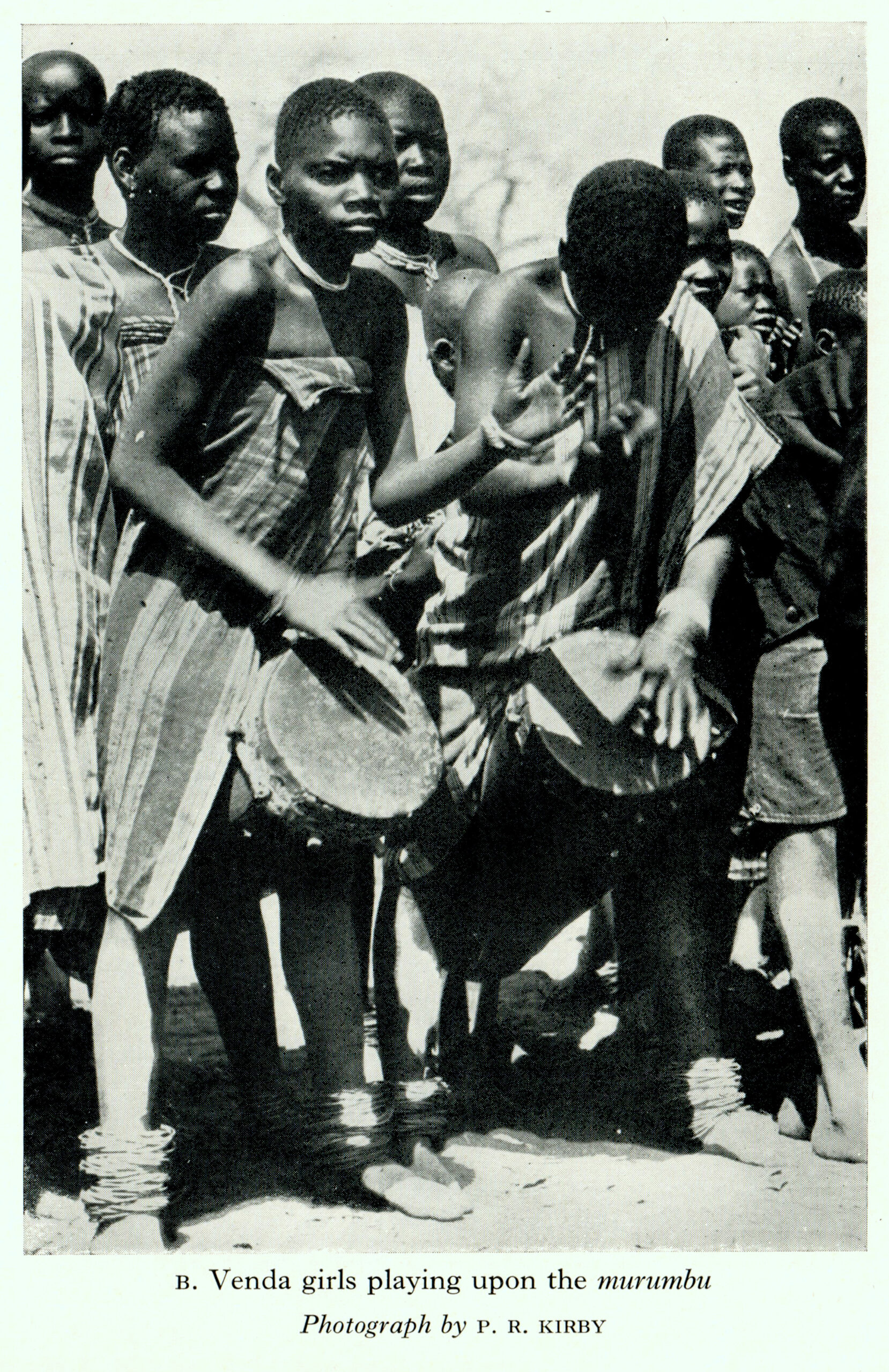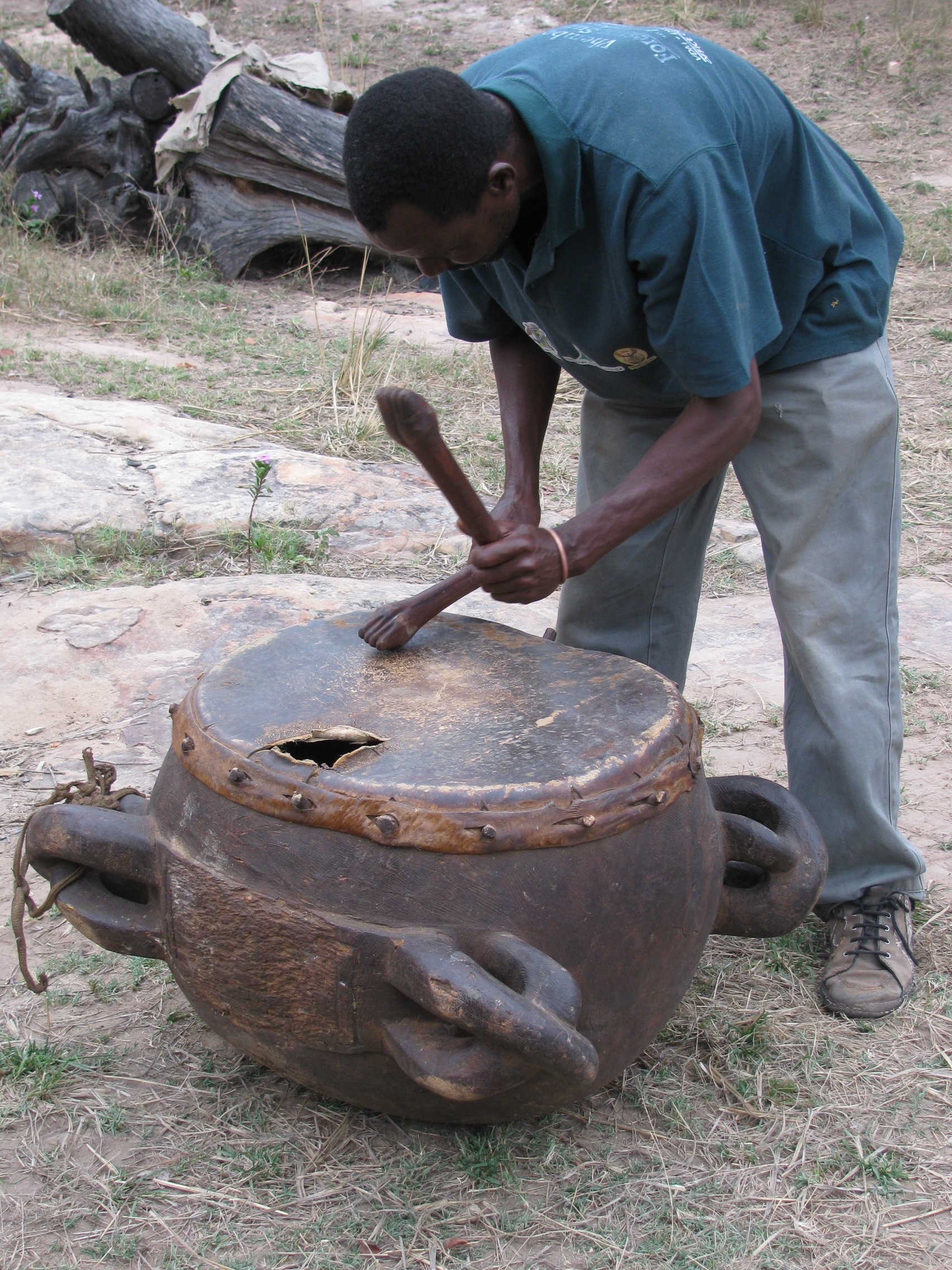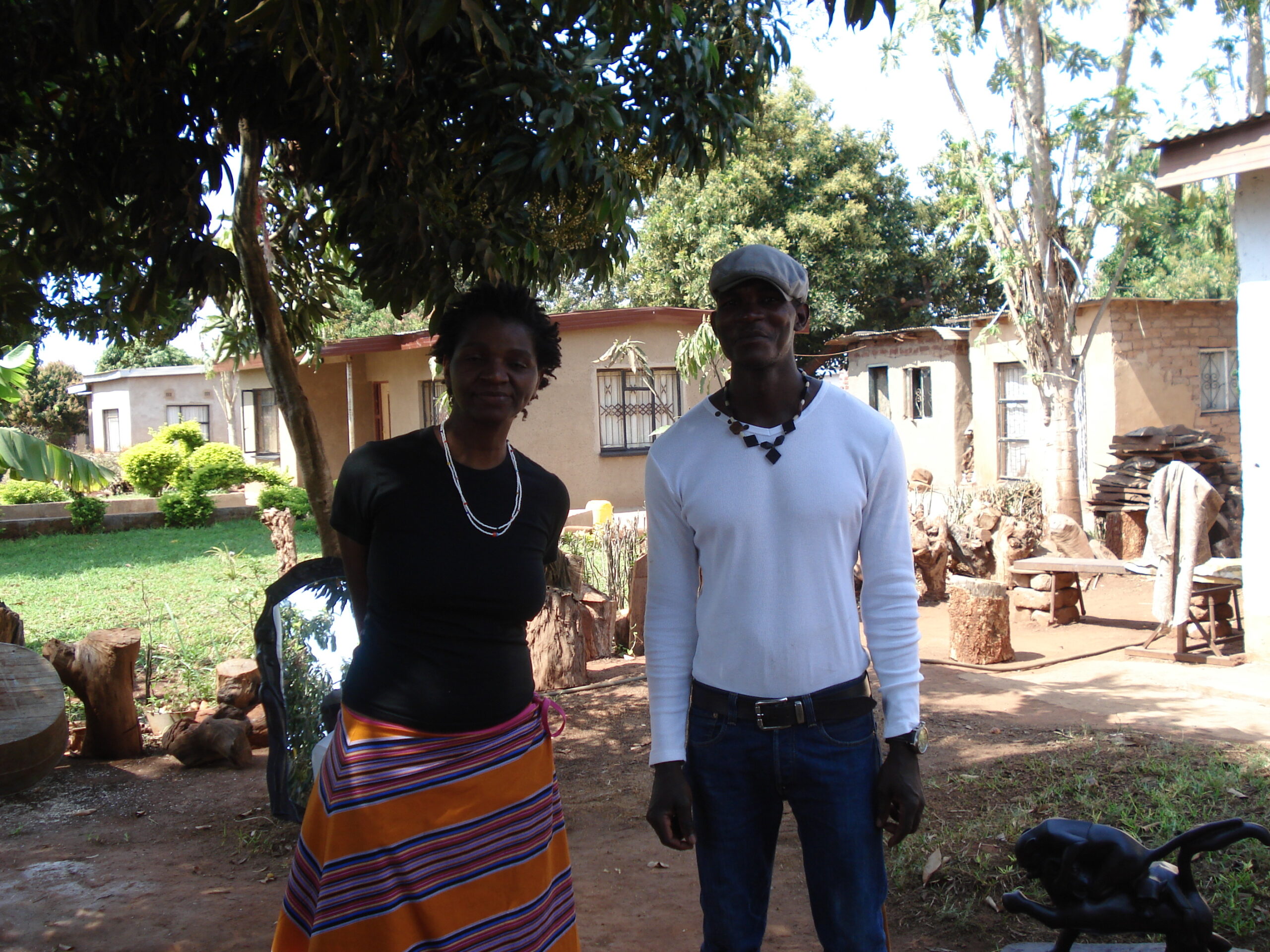Japhter Luvhimbi – Woman with marumba | Photo credit: Les Hammond, May 2025
Japhter Luvhimbi (born 1982) is an artist from Limpopo. He sculpts and makes jewellery from sustainably collected indigenous woods, like leadwood, African teak wild olive, as well as fruitwoods, like litchi and avocado, supplied by local fruit farmers. His work can be found in the collections of the Madi a Thava Art Museum in the Soutpansberg, The Wits University Art Gallery and the University of Venda Collection.
The work pictured above, titled Woman with marumba, sculpted in leadwood, depicts a young woman playing a drum. It piqued my interest due to its title: one might’ve expected “Woman with ngoma” — the word ‘marumba’ sounds very similar to marimba, i.e. the large xylophone-like instrument, which (uniquely among the cultures south of the Limpopo river) is a part of the musical heritage of the VhaVenḓa. And ngoma is a near-ubiquitous word for ‘drum’ in the Bantu languages: from TshiVenḓa’s neighbour Xitsonga, to chiShona and Chichewa, through to Kikongo and Kiswahili. In the Nguni languages ingoma has the slightly shifted meaning of ‘beat’ or ‘song’, but the rhythmic connection is still apparent. That this word survives nearly unchanged in disparate languages points to a common history and shared cultural roots with our neighbours across the continent.
The explanation is simply that TshiVenḓa distinguishes between different kinds of drum: a large bass drum which is indeed called ngoma, and the marumba (or murumba), which is specifically a medium-sized drum traditionally only played by women and characterised by its narrow, conical shape — built to the proportions of a traditional milk jug only larger; it’s even got the handle on the side, which Luvhimbi’s figure uses to hold the instrument between her legs — and which produces distinct sounds depending on whether it’s percussed with the player’s palm near the centre of the skin, or by the tips of her fingers nearer the edge.

Girls playing upon the murumba
Photo credit: Percival Kirby, c. 1934

Ngoma
Photo credit: Julia Meintjes, November 2009
Taken during a JMFA visit to Limpopo to meet with the artist
The Venḓa xylophone was called mbila or mbilamutondo, where mbila literally denotes a narrow, pitched key and is used as synecdoche to refer to the instrument as a whole, made up of numerous keys (which also clarifies its similarity to the chiShona name for ‘mbira’ or thumb pianos), and mutondo refers to African teak wood (Mugovhani, 2009:46-47) or indigenous wild mango wood (according to other translators online). The mbilamutondo sadly went extinct in the early 20th century with the Migrant Labour system and urbanisation taking potential apprentices away from the elders and master instrument makers who would otherwise have passed the tradition on (Kirby, 1968:xix-xx).
Fortunately, much of the underlying musical traditions of the VhaVenḓa lives on, including the murumba and ngoma. Mirumba are still played during the Domba initiation ceremony and the Tshikona reed-flute dance to this day: cultural practices which have endured.
Similarly, wood carving is a tradition which has been passed down through generations of VhaVenḓa and Vatsonga artists in Limpopo, and Luvhimbi, in turn, learnt the craft from his father. He sculpted Woman with marumba from life, observing his friend playing the drum. It serves as tangible proof that this is a living tradition. And ultimately, that is worth celebrating this Heritage Day: the artistic and musical traditions which continue to enrich our lives!

Japhter Luvhimbi and Nyeleti
Photo credit: Sarah B., August 2012
For more information about this sculpture and other available works by Japhter Luvhimbi, contact us at info@juliameintjes.co.za or 083 969 6926 (calls or Whatsapp)




